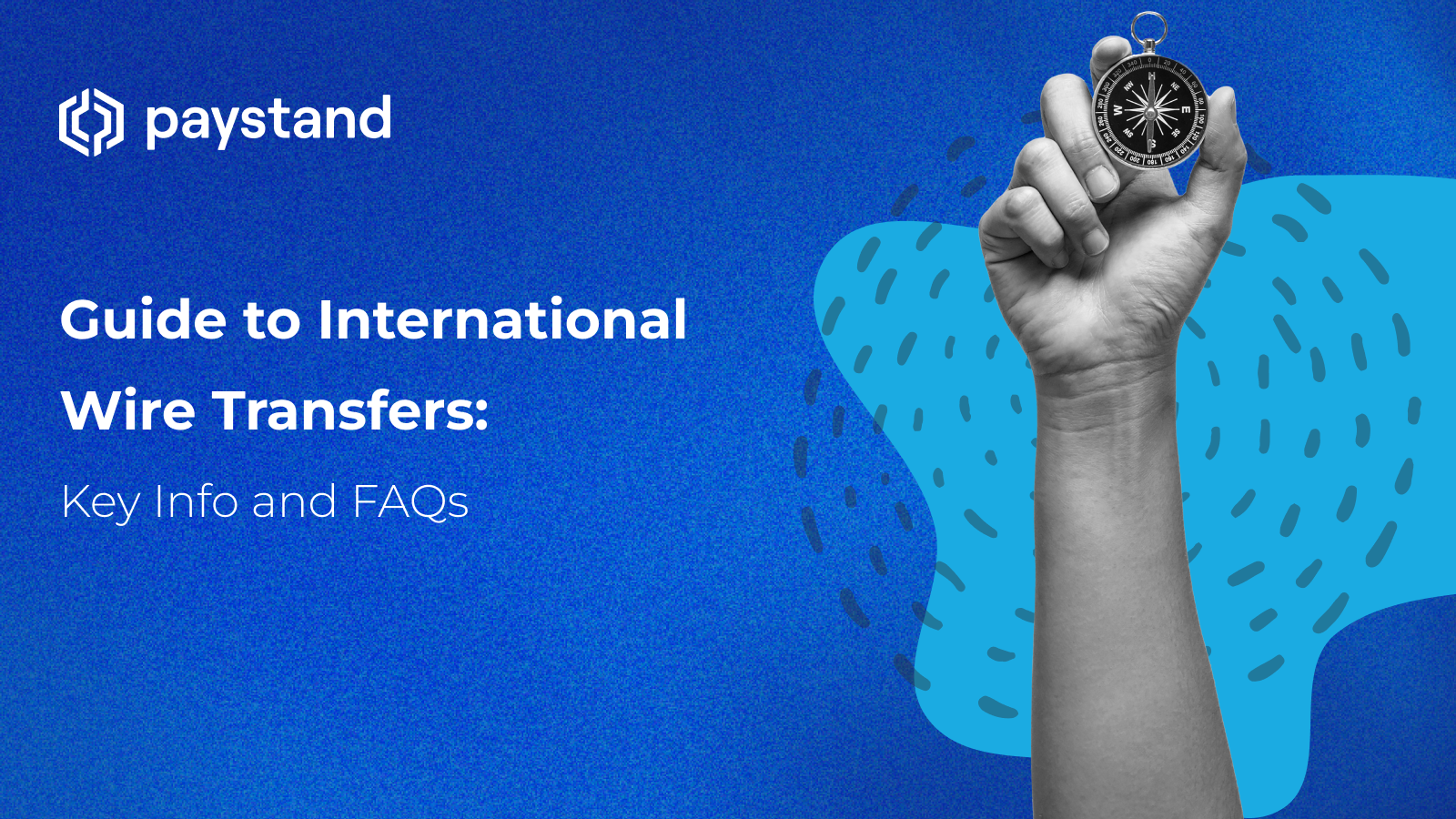Guide to International Wire Transfers: Key Info and FAQs

Table of contents:
- What is an International Wire transfer?
- When is an International Wire Transfer Used?
- How Do I Receive an International Wire Transfer?
- International Wire Transfer Fees
Key Takeaways:
- International wire transfers enable secure and direct cross-border payments essential for global businesses.
- Transfers generally take 1–5 business days, with possible delays due to intermediary banks and local regulations.
- Key information required includes the details of the recipient and sender, the recipient's bank information, the SWIFT code, and the transfer amount.
- Fees vary, with median costs around $15 for incoming and $45 for outgoing international transfers, while digital payment solutions may offer lower, flat-rate options.
International wire transfers are essential for businesses operating globally, enabling secure and direct cross-border payments. Whether your organization handles B2B payments or B2C transactions, understanding the intricacies of these transfers—including timelines, required information, and fees—can streamline your financial operations and improve cash flow. This guide addresses the common questions to help make your global payments seamless and efficient.

What is an International Wire transfer?
An international wire transfer is sent from a sender who resides in one country to a receiver who resides in another. Even if the sender and receiver share the same bank in different countries, these payments are considered international and require foreign currency exchange. Additionally, international wire transfers must remain compliant with international payment laws.
How Long Does an International Wire Transfer Take?
An international wire transfer takes one to five business days to process. This time can vary depending on several factors, including the countries involved, the banks used, and the type of transfer. While digital payment solutions offer faster turnaround times, traditional bank transfers may be delayed due to factors like intermediary banks, time zone differences, and local banking regulations.
What Information is Required for an International Wire Transfer?
To initiate an international wire transfer, you’ll need the following information to ensure your funds go through correctly:
- The recipient’s full name, address, and phone number
- The sender’s full name, address, and phone number
- The recipient’s bank name and address
- The recipient’s account number or IBAN (International Bank Account Number)
- Society for World Interbank Financial Telecommunication (SWIFT) code or BIC (Bank Identifier Code) for the recipient’s bank
- The amount that the wire transfer is for
This information ensures that the funds are routed accurately, especially for B2B payments where precise details are critical to avoid delays or errors.
Is a SWIFT Code Required for an International Wire Transfer?
Yes, in most cases, a SWIFT code is vital to complete an international wire transfer. The SWIFT code is an international banking code that identifies specific banks and branches, facilitating accurate cross-border transactions. Without a SWIFT code, banks may be unable to route the transfer properly, potentially leading to delays or even failed transactions.
When is an International Wire Transfer Used?
As the name states, international wire transfers are used for payments between countries. They can be used to send business-to-business (B2B), consumer-to-business (C2B), and consumer-to-consumer (C2C) payments.
In the US, international wire transfers are monitored by the Office of Foreign Assets Control – an agency that’s part of the US Treasury. This agency ensures that the money being sent via an international wire transfer is compliant with AML/CFT laws and that the wire transfer itself is not being sent to territories the US government currently sanctions. If the wire transfer violates these rules, the financial institution from which the funds are being sent can keep the transfer from going through.
Here are the reasons that a wire transfer might be flagged and blocked:
- The wire transfer is attempting to be sent to a non-account holder
- The incoming and outgoing wire transfers are of the same dollar amount
- The wire transfer is a large amount wired by a cash-only business
- Frequent wire transfers are being made for no concrete reason from the same account
- The wire transfer is being made to a safe-haven country

How Do I Receive an International Wire Transfer?
Receiving an international wire transfer is generally straightforward. The wire transfer is initiated once the sender provides the required information to his or her bank. The fee for the transfer is debited directly from the sender’s bank account, and the sender’s bank sends a message to the receiver’s bank through a secure system.
Then, the recipient’s bank deposits its funds into the recipient’s account. Finally, once the funds are completely transferred, both banks settle the full amount of the payment on the backend.
International Wire Transfer Fees
International wire transfer fees vary significantly depending on the banks involved, transfer amount, and other factors. Many banks charge for both sending and receiving wire transfers; according to NerdWallet, the median fees are typically $15 for incoming international transfers and $45 for outgoing ones. These fees can vary based on the banks involved and the countries between which the transfer is made.
Additionally, exchange rates play a crucial role in international wire transfers. Banks and transfer providers may apply a markup to the exchange rate, affecting the total amount received by the beneficiary.
Digital payment solutions offer efficient cross-border transactions, often reducing the traditional write transfer fees or offering flat-rate options, which is essential in today’s fast-paced business environment. Explore our eBook, The Competitive Advantage of Digital Payments in Your Supply Chain, to discover how digital payment solutions can enhance your B2B payments, reduce fees, and improve overall cash flow.





